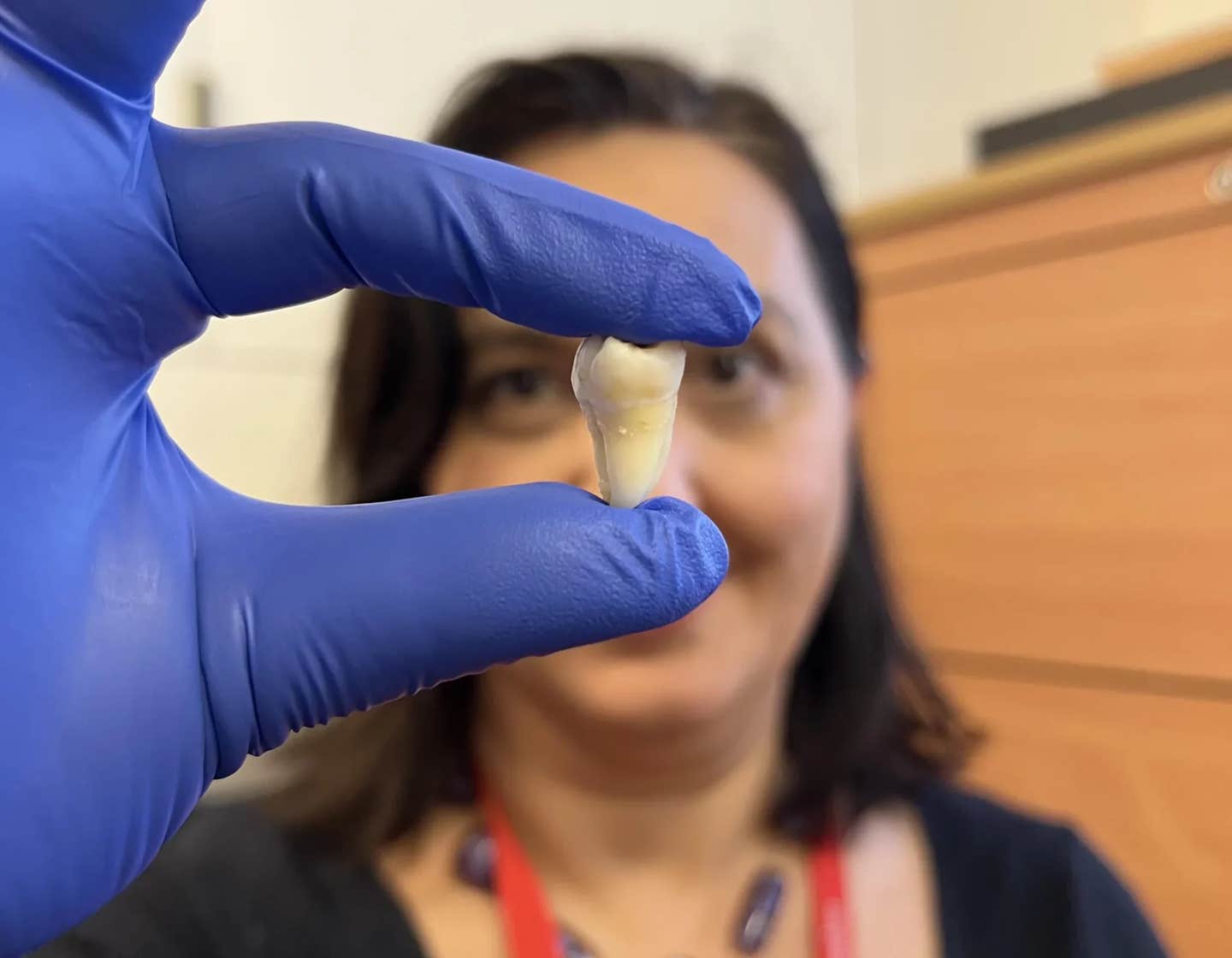Groundbreaking research identifies the trigger for puberty
Per researchers, at the organism level, genetic ablation of Tbx3 significantly delays the puberty onset and disturbs the estrous cycle.

[Nov 17, 2022: WU Qingfeng, Institute of Genetics and Developmental Biology]
Per researchers, at the organism level, genetic ablation of Tbx3 significantly delays the puberty onset and disturbs the estrous cycle. (Credit: Creative Commons)
The hypothalamus, one of the most complex brain regions in the mammalian nervous system, contains an astonishing heterogeneity of neurons that regulate endocrine, autonomic and behavioral functions. It not only regulates food consumption, water intake, body temperature, circadian rhythm and sleep to maintain the survival of individual organisms, but also controls puberty onset and reproductive behavior to sustain the breeding population.
"What triggers puberty" is one of the 125 Big Questions posed in the 125th anniversary edition of Science magazine. Researchers led by Prof. WU Qingfeng from the Institute of Genetics and Developmental Biology of the Chinese Academy of Sciences have revealed that the developmental programming of puberty onset is dependent on TBX3. They have also uncovered new rules for lineage progression, which operate through neuronal differentiation during the development of the hypothalamus.
Results were published in Science Advances.
In this study, Prof. WU's group found that TBX3 defines a progenitor domain in the developing hypothalamus and serves as a fate determinant to sequentially control the establishment and maintenance of neuronal fate.
The neuroendocrine system consists of a heterogeneous collection of neuropeptidergic neurons in the brain, among which hypothalamic KNDy neurons represent an indispensable cell subtype controlling puberty onset.
Related Stories
Although it has been proposed that hypothalamic neural progenitors and neuronal precursors along the lineage hierarchy adopt a cascade diversification strategy to generate extreme neuronal diversity, the cellular logic for specifying a subtype of neuroendocrine neurons has been unclear.
Previous genetic studies suggest that genetic mutations in TBX3 cause ulnar-mammary syndrome (UMS), which is characterized by shortened forelimbs, defective mammary gland development and genital abnormalities. It is notable that most UMS patients display delayed onset of puberty.
According to the researchers, at the organism level, genetic ablation of Tbx3 significantly delays the puberty onset of animals and disturbs the estrous cycle of female mice. At the cellular level, TBX3 plays an important role in the fate establishment and maintenance of hypothalamic KNDy neurons. In addition, at the molecular level, TBX3 regulates gene transcription via phase separation, thereby inducing neuropeptide expression in the hypothalamic neurons.
Tbx3 defines an ATD generating multiple neuronal subtypes. (A) Updated prosomeric model supported by the specific expression of Tbx3 in the hypothalamic ATD. (B) Targeting strategy for generating Tbx3-CreERT2 knock-in mouse line. (C) Genetic labeling of Tbx3+ neural progenitor cells (NPCs) with Tbx3-CreERT2::Ai9 mice. Quantification shows a high labeling efficiency (~92%) of Tbx3+ progenitors by tdTomato (tdT) at 1 day after tamoxifen induction. Scale bars, 100 and 50 μm. (D) Three-dimensional reconstruction of genetically labeled cells in Tbx3-CreERT2::Ai9 and Rax-CreERT2::Ai9 mice. Scale bars, 400, 1000, and 400 μm. (CREDIT: Science Advances)
Importantly, multiple TBX3 mutants identified in UMS patients fail to form phase-separated condensates and cannot efficiently regulate neuropeptide expression, which provides a pathological mechanism underlying the delayed puberty in UMS patients.
Furthermore, Prof. WU aimed to answer how neuronal lineage progresses during hypothalamus development under physiological and pathological conditions. He and his colleagues used an unprecedented strategy of cell-type alignment by comparing single-cell datasets from lineage tracing and genetically manipulated mice, and revealed two lineage-independent rules—intralineage retention (ILR) and interlineage interaction (ILI)—that regulate lineage progression under pathological conditions.
Tbx3 defines an ATD generating multiple neuronal subtypes. Three-dimensional reconstruction of fluorescently labeled brains from Tbx3-CreERT2::Ai9 mice. The animals were induced with tamoxifen at E9, E11, or E13 and sacrificed at P0. Scale bars, 700 μm.. (CREDIT: Science Advances)
Collectively, this study uncovers the cellular and molecular mechanisms underlying how TBX3 mutations interfere with the onset of puberty in UMS patients and reveals the rules of ILR and ILI during cell fate specification.
What is puberty?
Puberty is when your child’s body begins to develop and change as they transition into adulthood. It’s the time in your child’s life when they go through the physical changes to reach sexual maturity and are capable of reproduction. The stages of puberty follow a definite path with a progression of physical changes. The emotional changes of puberty may not progress at the same pace as the physical changes. Both the physical and emotional changes of puberty begin and end at different ages for each child.
Puberty starts when a part of your child’s brain called the hypothalamus begins producing a hormone called gonadotropin-releasing hormone (GnRH). The hypothalamus sends GnRH to another part of the brain called the pituitary gland. GnRH stimulates the pituitary gland to release two more hormones — luteinizing hormone (LH) and follicle-stimulating hormone (FSH). These hormones travel to the sex organs (ovaries and testes), triggering them to begin releasing sex hormones (estrogen and testosterone). These messenger hormones cause the telltale signs of puberty to begin.
When do boys start puberty?
Boys begin puberty sometime between the ages of 9 and 14. Boys hit puberty about two years later than girls. However, Black and Hispanic boys tend to enter puberty a bit earlier than white boys. If your son starts showing signs of puberty before age 9, it’s worth asking his pediatrician about these early changes. Similarly, if no signs of puberty have happened by age 15, it’s worth asking his pediatrician about this delay.
When do girls start puberty?
Girls generally begin puberty about two years earlier than boys. Puberty for girls usually starts between the ages of 8 and 13. However, Black and Hispanic girls tend to start puberty earlier than white girls (age 7½ instead of 8).
What if puberty hits really early or late?
Not everyone will through go puberty at the same time. Some girls begin to see changes very early, which is called precocious puberty. Other girls may not see changes until later, which is sometimes called delayed puberty.
Precocious (early) puberty: A few red flags signal unusual development in girls. These include:
Showing signs of puberty before their 8th birthday.
Body changes that progress very quickly.
Body changes that occur “out of order,” such as starting periods before developing breasts.
A major disconnect between pubic hair development and breast development (such as no pubic hair but fully developing breasts, or vice versa).
If these occur, mention it to your child’s healthcare provider. Simple testing can help determine the cause of precocious puberty, such as:
The pituitary gland may have “turned on” the hormones too early.
A tumor may be developing on the adrenal gland or elsewhere.
Your daughter may have been exposed to estrogen (through estrogen cream, for instance).
Your child’s healthcare provider may simply wait and monitor your daughter’s progress, or refer her to a specialist for tests. If needed, an endocrinologist can prescribe puberty blockers to halt puberty until the appropriate time. Puberty blockers are medications that prevent your child’s body from producing the sex hormones that cause the physical changes of puberty.
Delayed puberty: If your daughter starts puberty very late or doesn’t seem to be progressing through puberty, it’s also worth asking her healthcare provider about it. She may just be a late bloomer, especially if her mother was.
However, hormonal problems or disordered eating are other possibilities. If your child’s healthcare provider suspects an underlying problem, they may refer your child to a specialist for testing and management.
This work was funded by the National Key R&D Program of China, the National Natural Science Foundation of China, the Strategic Priority Research Program of CAS and the Beijing Municipal Science & Technology Commission.
For more science stories check out our New Discoveries section at The Brighter Side of News.
Note: Materials provided above by Institute of Genetics and Developmental Biology. Content may be edited for style and length.
Like these kind of feel good stories? Get the Brighter Side of News' newsletter.
Joseph Shavit
Head Science News Writer | Communicating Innovation & Discovery
Based in Los Angeles, Joseph Shavit is an accomplished science journalist, head science news writer and co-founder at The Brighter Side of News, where he translates cutting-edge discoveries into compelling stories for a broad audience. With a strong background spanning science, business, product management, media leadership, and entrepreneurship, Joseph brings a unique perspective to science communication. His expertise allows him to uncover the intersection of technological advancements and market potential, shedding light on how groundbreaking research evolves into transformative products and industries.



